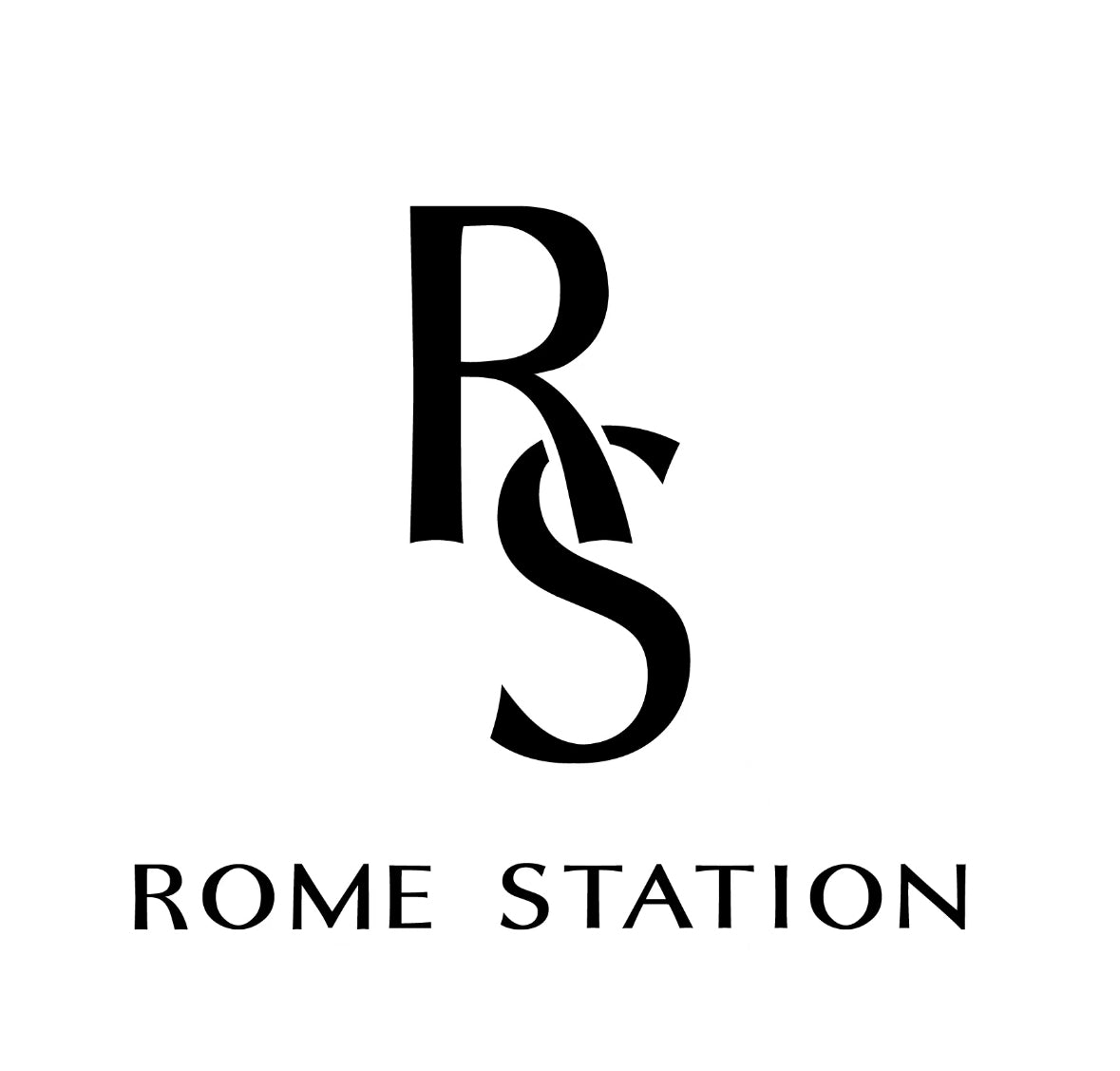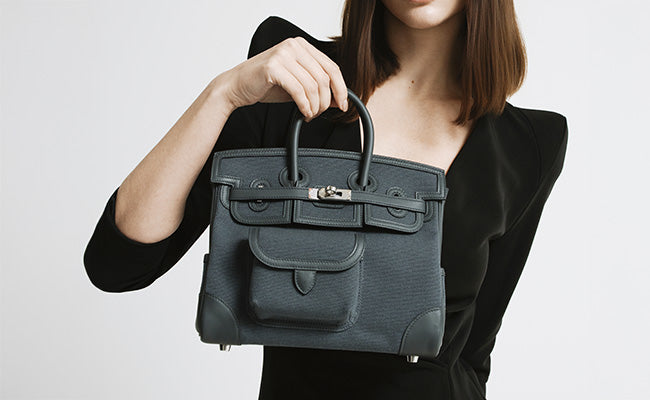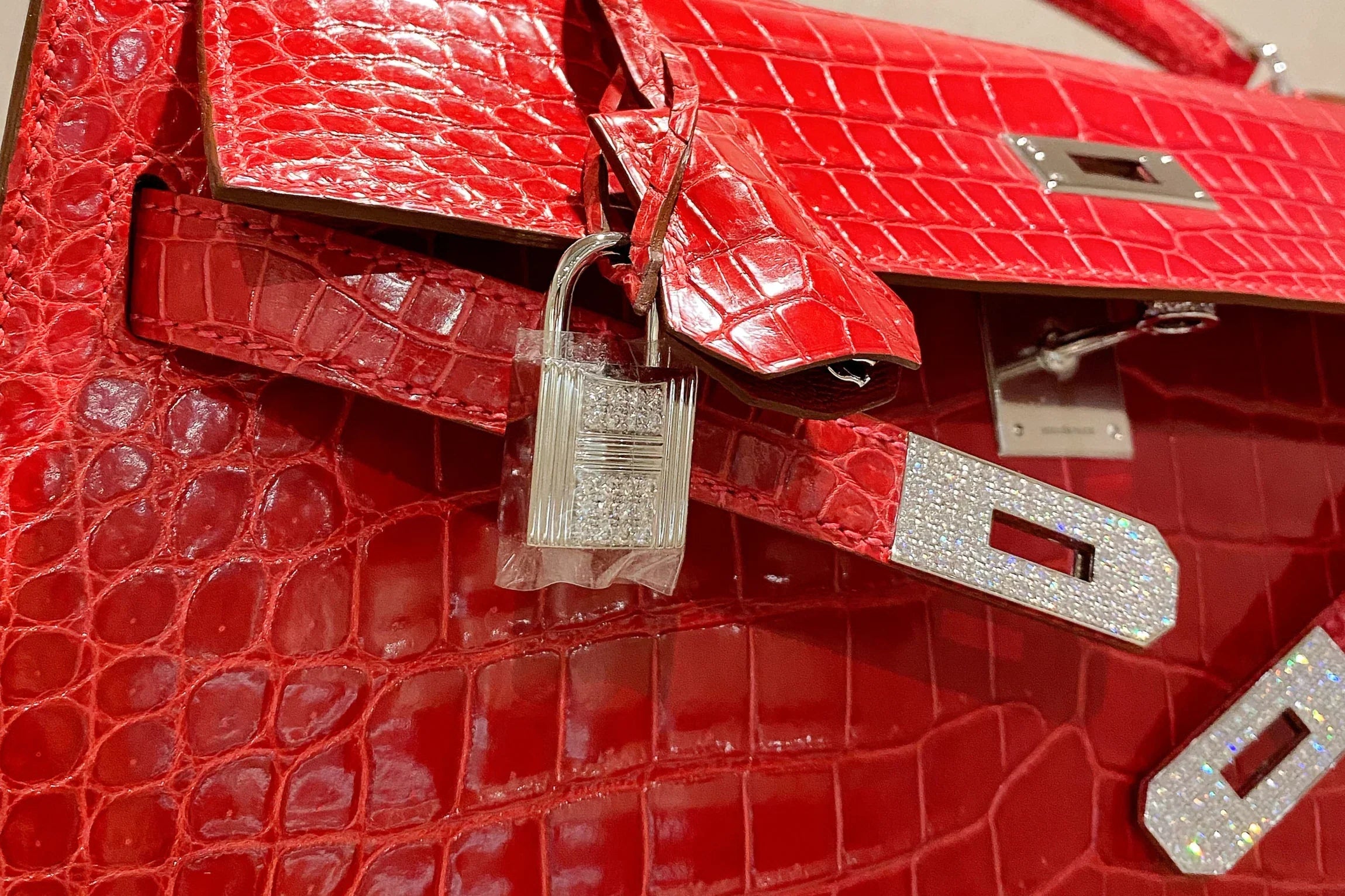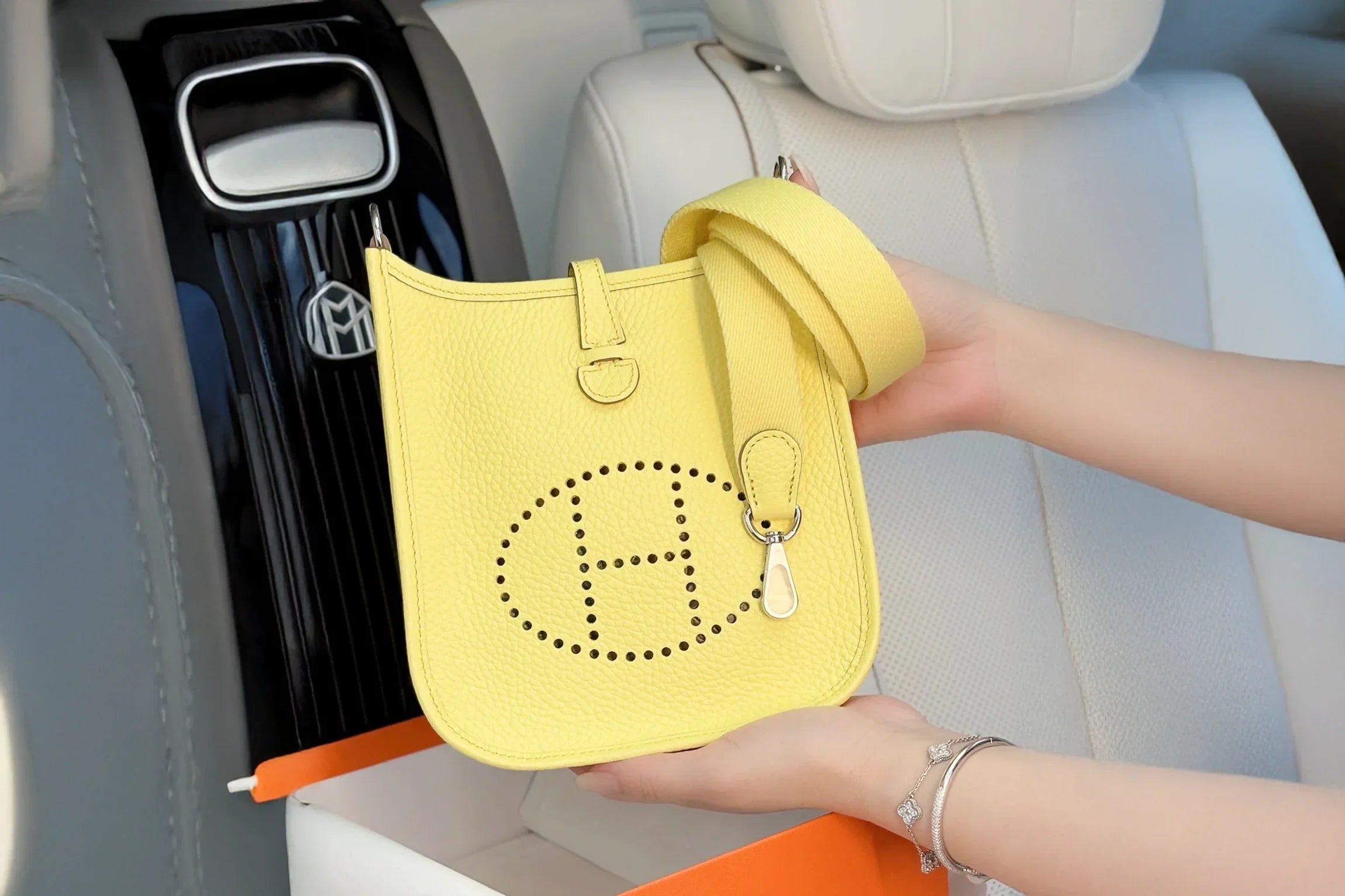
Investing in Vintage Hermès Bags: Why Age Can Enhance Value
Check out our Hermès collection and Birkin bags!
When it comes to luxury accessories, few things get collectors buzzing like a vintage Hermès bag. Age often adds to the value of these iconic bags, making them not just statement pieces but smart investments as well. It’s more than just a logo, it’s about the stories, the craftsmanship, and a certain magic that only time brings.
Every vintage Hermès bag holds its own story and personality. The patina, the rarity, and those echoes of past decades all blend together, making these pieces irresistible to collectors and investors.
If you’re eyeing a vintage Hermès, understanding how age shapes value, what details to watch for, and how to care for these treasures can help you make smarter choices, and maybe even fall a little more in love with your collection. Why do vintage Hermès bags keep capturing our imaginations? Let’s dig in.
Key Takeaways
- Vintage Hermès bags often gain value as they age.
- Authenticity and condition really matter when it comes to worth.
- Knowing how to care for your bag helps you make better investment decisions.
Understanding Vintage Hermès Bags
Vintage Hermès bags have a pull that’s hard to explain, maybe it’s the history, maybe it’s the feel of the leather, or maybe it’s just knowing you own something special. Their age, style, and the quality of materials all play a part in how much collectors want them.
Defining Vintage: Age Criteria and Significance
When people say “vintage” Hermès, they usually mean bags that are at least 10 or 20 years old. Most of us think of the 1990s and earlier as the true vintage era, though some will stretch that to the early 2000s.
Why does age matter? Well, older bags often feature leathers, colors, and hardware you just can’t find anymore. If you care for them, they can even appreciate in value, think of them as wearable art that quietly tells its own story.
Fun fact: bags with a cool backstory, rare stamps, or celebrity ownership can fetch eye-popping prices at auction.
Iconic Hermès Styles and Eras
You’ve got your Birkin, Kelly, and Constance, each one with its own chapter in Hermès history, and each era brings its own quirks.
- Birkin: Launched in 1984; late ’80s and ’90s Birkins are known for their dense, distinctive leathers.
- Kelly: Goes all the way back to the 1930s, but really took off in the ’50s; vintage Kellys have unique hardware and hand-stitching.
- Constance: Debuted in 1959; older versions are slimmer, sometimes made in rare exotic skins.
Occasionally, you’ll come across a quirky limited edition that just screams a certain era, those tend to get snatched up quickly.
Materials and Craftsmanship Standards
Hermès is all about the artisan’s touch. With vintage bags, the materials really stand out. Some leathers, like old Box calf or early crocodile, feel thicker and develop richer patinas than their modern cousins.
Older hardware sometimes features 24k gold plating, and the hand-stitched seams aren’t always perfectly uniform, which is actually a good thing. Those tiny “imperfections” mean a real human made it, not a machine.
Here’s a quick cheat sheet on what you’ll often see in vintage Hermès bags:
| Material | Signature Details |
|---|---|
| Box Calf Leather | Smooth, glossy surface, ages beautifully |
| Togo/Clemence | Grained, slouchier with time |
| Exotic skins | Crocodile, alligator, lizard; rare in older colours |
| Hardware | Gold or palladium; some bags use unique finishes or engravings |
A well-loved Hermès bag doesn’t just survive, it changes, picking up little marks and quirks that make it more interesting.
Why Age Matters: The Allure of Vintage
As Hermès bags get older, their appeal isn’t just about nostalgia. It’s about rare details, unique histories, and a sense of exclusivity you can’t buy off the shelf.
Rarity and Exclusivity of Older Bags
There’s nothing quite like finding a bag that nobody else has. Vintage Hermès bags often come in colors, sizes, or leathers that are long gone, think Box Calf in a rare hue or a funky old clasp. Discontinued features and limited runs make hunting for these bags a serious thrill.
A Kelly or Birkin from the ’70s might have a stamp or detail you’ll never see on a new one. That kind of rarity turns heads among Hermès fans and makes us feel like we’re in on a secret. When supply is truly limited, the value just keeps climbing.
Rarity checklist:
- Discontinued leathers or craft techniques
- Unique hardware (think gold-plating, oddball finishes)
- Limited edition series
Landing one of these rare birds? It’s a rush every collector knows.
Heritage Influence on Desirability
Every Hermès bag is a little slice of the brand’s story. Vintage bags connect us to the roots of Hermès and the old-school techniques that built its reputation. It’s not just a bag, it’s a bit of fashion history.
Older pieces often show off craftsmanship you just don’t see anymore. Hand-stitched seams, classic locks, old branding, these details show how style and skill have evolved. There’s something about that connection to the past that makes vintage bags extra appealing, especially if you’re a sucker for authenticity.
Storytelling and Provenance
Let’s face it, every Hermès bag has a past, but vintage ones? They’ve got whole sagas. Provenance, the bag’s documented history, makes it even more interesting. Some bags were carried by socialites, others have traveled the globe.
A good story adds to both the emotional and market value. If you know who owned it, when it was gifted, or what events it’s seen, you’ve got a great conversation starter. Auction houses sometimes provide records that can send prices soaring.
Owning a bag with a history feels personal, like you’re adding your own chapter to something much bigger.
The Investment Potential of Aged Hermès Bags
The vintage Hermès market isn’t static. Prices, demand, rarity, and condition all mix together to create some real investment opportunities, if you know what to look for.
Market Trends: Price Appreciation Over Time
Vintage Hermès bags, especially Birkins and Kellys, have seen their prices climb steadily over the past twenty years. Auction results often show that some bags outperform luxury watches or even stocks. A well-kept Birkin from the 1990s that you might have bought for $6,000 could easily fetch $20,000 or more now.
But it’s not just about age. Condition and provenance matter. Bags with their original receipts, dust bags, and minimal wear get top dollar. Popular models have averaged 8–14% annual growth, which is better than a lot of other luxury goods.
Comparing Vintage vs. New Hermès Bag Values
Sure, new Hermès bags have waitlists, but vintage ones offer something different. Once a bag hits the 10-year mark, its appreciation potential jumps, especially if the color or leather is rare.
Here’s a quick side-by-side:
| Type | Retail Price (CAD) | Resale Value (5–10 yrs) | Notable Advantage |
|---|---|---|---|
| New Birkin | $15,000–$30,000 | $20,000–$35,000 | Current trends, pristine |
| Vintage Birkin (’90s, rare colour) | $6,000–$12,000 | $20,000–$50,000+ | Rarity, unique patina |
Vintage bags have a character you just can’t get from something brand new. The patina, the hardware quirks, the history, these are the things collectors really chase.
Limited Editions and Discontinued Colours
Limited edition Hermès bags and discontinued colors are the stuff of legend. Colors like Vert Cypress, Rose Confetti, or Bleu Jean? Collectors go wild for them. Once Hermès retires a color or hardware, prices on the resale market often shoot up.
Limited runs like the Faubourg or Shadow Birkin can top $100,000 at auction, depending on details and background. Out-of-production leathers or exotics are just as hot, especially if the bag still has its original extras.
Spotting these details can turn a good investment into a truly unforgettable one.
Key Factors That Enhance Value in Vintage Hermès
When you’re sizing up vintage Hermès, a few things really stand out: the leather’s condition, the presence of original extras, and the hardware’s story. Each one can nudge a bag’s value higher, or lower, on the collector and resale markets.
Condition and Patina
Condition isn’t just about looking perfect. Some wear, especially a gorgeous patina, can actually make a bag more desirable, as long as it’s natural and not damage.
Bags in top shape, free from stains, tears, or deep scratches, command the best prices. But a little creasing or softening makes a bag feel real, not just “store fresh.” That said, cracked leather, bad odors, or big ink marks? Yeah, those are deal-breakers.
A rich patina, especially on Box calf or Barenia leather, is a badge of honor. It shows off the bag’s age and quality. For many of us, it’s proof a bag has lived but still has plenty of life left.
Original Packaging and Accessories
The extras matter. Hermès buyers notice when you’ve got the original dust bag, box, care booklet, raincoat, clochette, keys, and lock.
Here’s what to check for:
- Box and dust bag: Protect the bag and back up authenticity
- Raincoat: Shows Hermès’ attention to detail
- Clochette, lock, keys: Especially for Kelly and Birkin bags
Missing some accessories isn’t the end of the world, but having the whole set just feels right. Sometimes, extras can bump a bag’s value by 20–30%, especially for rare editions.
Hardware and Stamp Marks
Hermès hardware, whether it’s palladium, gold, or something else, can make or break a bag’s appeal. Shiny, original hardware wins out over scratched or replaced parts every time.
Stamp marks, usually tucked inside, tell you the year and sometimes the workshop or artisan. Always check the font, depth, and placement to make sure it’s legit.
Pro tip: A crisp, clear stamp gives buyers confidence. Collectors use these little codes to trace a bag’s history, making them pretty important for value.
Verifying Authenticity and Spotting Restorations
Knowing what makes a Hermès bag real is one thing, but spotting repairs or changes is just as important if you’re investing. Little details, hidden stamps, and subtle restoration work can swing a bag’s value quite a bit.
Signature Hermès Authentication Features
Hermès bags have telltale signs that set them apart from fakes. Always look for the heat-stamped “Hermès Paris Made in France” logo inside. It should be sharp, clear, and evenly spaced.
Don’t skip the blind stamp, usually on a leather tab or behind the flap. It tells you the year and the artisan, real bags never miss this. Hand-stitching should look tight, angled, and a bit irregular (in a good way).
The hardware should feel heavy and solid, with a smooth finish. Screws should be flatheads, not Phillips. When in doubt, compare these details to trusted reference images or Hermès itself.
Common Restoration Techniques
Vintage Hermès bags sometimes get professional touch-ups to keep them looking good and lasting longer. Leather spa treatments, edge repainting (especially on worn handles), and hardware polishing pop up most often.
Specialists usually match the original color and sheen pretty closely, so good work doesn’t jump out at you. Swapping out zipper pulls or fixing stitches happens, too, but Hermès tends to stick with their exact materials for repairs.
If a bag has a “Hermès Spa” record, collectors don’t usually mind, but it’s still worth knowing. Always ask for documentation on any restoration or cleaning to keep provenance clear.
Red Flags to Watch Out For
Watch out for sloppy logo stamps, weird stitching, and hardware that just feels cheap. A missing or suspicious date stamp? Big red flag.
Restorations done outside Hermès sometimes use the wrong thread or dye, or leave behind a chemical smell. Leather that looks too shiny or plasticky, or bags with a warped shape, can mean amateur fixes.
If the price is oddly low or a seller dodges questions about a bag’s past, be careful. When you’re unsure, get Hermès or a real expert to take a look.
Sourcing and Purchasing Tips for Collectors
Buying vintage Hermès takes planning and a sharp eye. Finding trustworthy sources, asking good questions, and connecting with other collectors keeps us on track.
Recommended Retailers and Auctions
For peace of mind, stick with big names like Heritage Auctions, Sotheby’s, or Christie’s. They’ll authenticate each bag, provide paperwork, and often share its backstory. Local consignment shops with good reputations offer a chance to inspect bags in person.
Always check for Hermès official receipts, original dust bags, and authenticity cards. Trusted online sites like Vestiaire Collective and 1stDibs do solid vetting, but we skip new or unproven sellers for big-ticket bags. Here’s a quick comparison:
| Source | Pros | Cons |
|---|---|---|
| Renowned Auctions | Reliable authentication | Higher fees, competitive bidding |
| Specialist Boutiques | In-person inspection | Limited selection, localised supply |
| Curated Online Sites | Wide choice, buyer support | Risk of counterfeits, shipping time |
Questions to Ask Before Buying
We always dig into a bag’s past. We ask for the year of production, blind stamp, and provenance. Some must-ask questions:
- Did Hermès handle repairs, or was it done elsewhere?
- Are all original parts there, hardware, stitching, everything?
- Any odd smells, discoloration, or damage?
- Does it come with a CITES certificate if it’s exotic leather?
Ask for high-res photos and close-ups of hardware, corners, and stamps to see the real condition. Always get the return policy and authenticity guarantees in writing. If details don’t line up, we move on.
Building Relationships in the Hermès Community
Getting to know other collectors and boutique staff can lead to inside tips and first dibs on rare finds. We make an effort to show up at Hermès collector meetups, join forums like The PurseForum, and stay active in trusted social media groups.
Knowing reputable resellers means we sometimes hear about private sales or get honest advice on price trends. Being friendly with boutiques keeps us in the loop about inventory and special events. Sharing knowledge gives us an edge when that dream vintage bag pops up.
Caring for Vintage Hermès Bags
Taking care of vintage Hermès bags is more than hiding them in a closet and hoping for the best. Routine care and gentle cleaning help keep their beauty and value intact.
Proper Storage and Handling
Store Hermès bags upright in their original dust bags, away from sunlight and moisture. Humidity can warp or crack leather, and sunlight fades colors or dries things out. Lining shelves with acid-free tissue is smart, and stuffing bags with soft paper helps them keep their shape.
Handles need extra care. Clean hands or a silk scarf wrap help keep oil and dirt away. Don’t hang vintage bags by their handles for long stretches, or they’ll stretch or warp.
Keep bags away from perfumes, hairspray, and heat, they can stain or ruin leather. Rotating which bags you use gives each one a break and helps them last longer.
Cleaning Methods for Aged Leathers
Vintage Hermès leathers do best with gentle, minimal cleaning. Wipe surfaces with a soft, dry, lint-free cloth after each use to catch dust. For stubborn spots, a slightly damp cloth might help, but never soak, scrub, or use harsh cleaners.
Go easy on conditioning. Use a quality leather conditioner made for luxury leathers, and always test a small spot first. Skip household products and anything alcohol-based. Quick reference:
| Material | Recommended Cleaner | Frequency |
|---|---|---|
| Togo, Clemence | Hermès-approved conditioner | Twice yearly |
| Box Calf | Soft dry cloth only | Monthly wipe-down |
| Exotic leathers | Professional care | Yearly |
If you’re unsure, just ask Hermès.
When to Seek Professional Restoration
If you spot cracks, deep stains, tarnished hardware, or tears you can’t handle, it’s time for professional help. Hermès offers a spa service that’s known for careful, almost invisible repairs.
Don’t send a rare bag to just any repair shop. Look for specialists with luxury handbag experience, ideally with Hermès. Ask for references, see their past work, and talk through any worries up front.
Pros can also help with drying, reshaping, or redoing stitches. Sometimes, you just need to let the experts take over.
Displaying and Enjoying Your Hermès Collection
Enjoying Hermès bags isn’t just about investment, it’s about loving their artistry and heritage, too. Creating the right space lets us appreciate them every day.
Showcasing Bags at Home
Displaying vintage Hermès bags at home is a chance to mix inspiration with protection. A glass cabinet with UV-filtered lighting works well to show off details and cut down on dust and sunlight.
Store bags upright and support their shape with soft inserts. Don’t hang them by the handles, stretching is real. Some collectors use acid-free tissue paper or special bag pillows inside to help with shape. Sometimes, we rotate a few “on show” bags and keep the rest covered.
Arranging bags by size, color, or model in a clean, simple setup brings order and a touch of elegance. Even a small collection can make a big statement.
Using Vintage Bags vs. Preserving for Investment
We all wonder, should we carry our vintage Hermès or just stash them away as investments? Using a bag means risking scratches or wear. Still, a bit of patina can add personality and a sense of history.
If you want to preserve them, climate control and careful storage matter. Here’s a quick checklist for long-term care:
- Store in original dust bags and boxes
- Avoid sunlight and humidity
- Use silica gel packs for moisture
- Limit handling and don’t overstuff
There’s something special about carrying a vintage Birkin or Kelly, but if resale is the priority, gentle use and regular checks help keep value up.
Sharing Your Story with Fellow Enthusiasts
Connecting with other Hermès fans makes collecting more fun. We find inspiration in meetups, local luxury groups, or online forums. Social media, Instagram, private Facebook groups, lets us share photos, care tips, and sourcing advice.
When we show our bags, we’re up front about the model, color, and condition. Authenticity matters to everyone, so we skip vague stories. Swapping tales of rare finds, repairs, or auction wins brings the community closer and helps us all get smarter.
Honestly, sometimes the best part is laughing about bag mishaps or trading tips for snagging an elusive Hermès appointment. At the end of the day, collecting is as much about people as it is about the pieces.
Frequently Asked Questions
Vintage Hermès bags draw collectors with their exclusivity, condition, and timeless charm. Model, production year, provenance, and rarity can all swing investment value.
What sets vintage Hermès bags apart as a smart investment choice?
It comes down to craftsmanship, limited production, and Hermès’s global reputation. These bags aren’t mass-produced, so only a few hit the market each year. That scarcity, plus the brand’s legacy, gives vintage Hermès an edge over other luxury labels.
Which specific Hermès models should you consider for the best investment returns?
Birkin and Kelly bags are the big names, with the Constance right behind. Limited editions, rare leathers like crocodile or ostrich, and special colors can push value higher. If you’re in it for the long haul, go for classic styles in neutral tones.
What makes the Hermès Birkin a consistent symbol of luxury and value?
The Birkin’s all about hand-stitching, top-notch materials, and those famously long waitlists. It’s understated, no flashy logos. It’s not just a status symbol; it’s a quiet statement about taste and patience.
How can you accurately determine the worth of a pre-owned Hermès bag?
Check condition (pristine, used, refurbished), rarity, year, receipts, and extras like the dust bag and lock. An expert appraisal and recent auction sales will help you figure out if the price is right.
Could you really see your Hermès bag's value double within a five-year span?
Some rare Birkins and Kellys in certain colors or skins have doubled in value in a few years. But it’s not a sure thing, resale markets can be unpredictable. It’s a bit of a roller coaster, but a pretty stylish one.
What's the insider scoop on navigating Hermès waitlists to snag your dream bag?
Honestly? It starts with people. Chatting with Hermès sales associates, dropping by the boutique now and then, and just being friendly goes a long way. If you remember their favorite color or ask about their day, that doesn’t hurt either. You’ll need a mix of persistence and patience, and, well, sometimes luck just decides if you walk out with that elusive bag.




